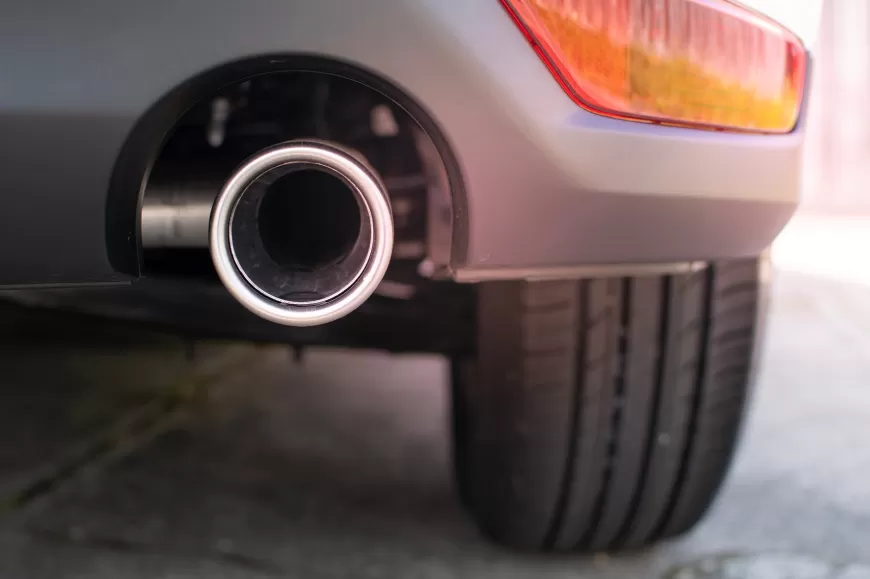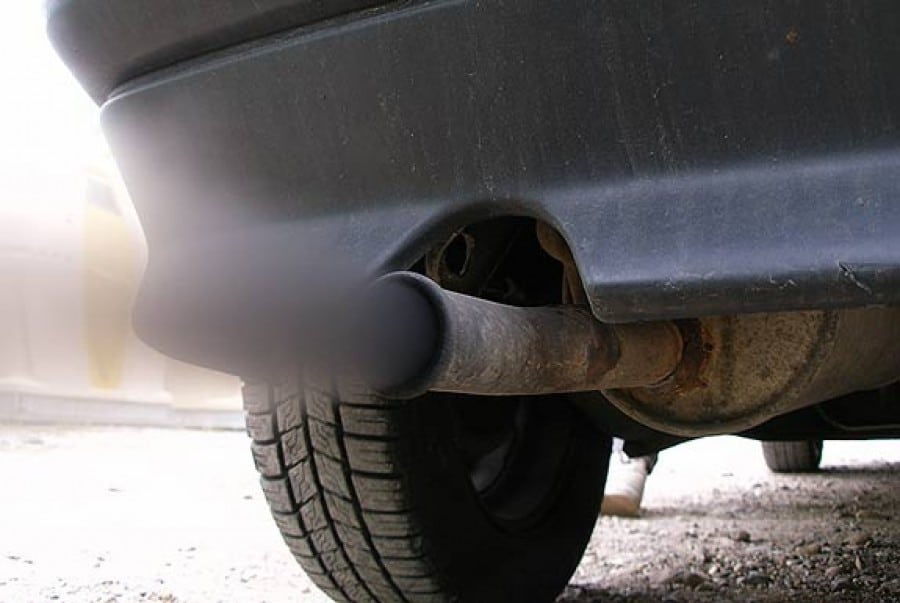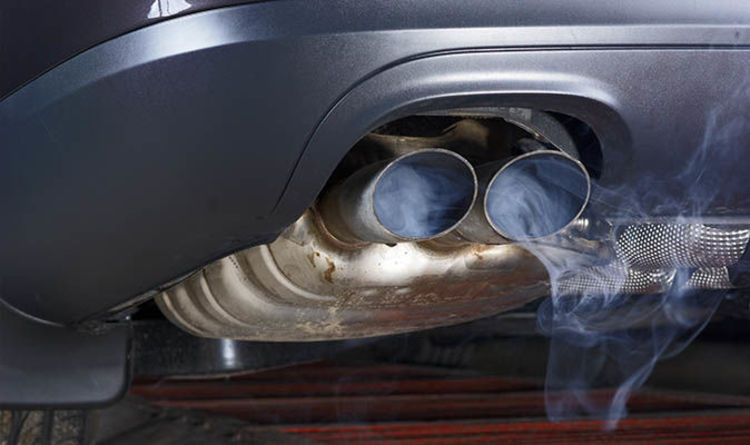In the UK, when they check your car with the MOT test, they also make sure your car isn’t bad for the environment. They do this for a few important reasons. First, they want to reduce the dirty stuff that comes out of cars and harms the air. Second, they want to make sure cars follow the rules about how much bad stuff, like smoke, they can make. This is important for people’s health because dirty air can make us sick.
Third, it encourages people to keep their cars in good shape, so they work well and don’t make too much of a mess in the air. Fourth, it’s fair because everyone has to follow the same rules. Finally, it helps cars keep up with the new ways to be cleaner and better for the Earth. So, the MOT test helps keep the air clean, people healthy, and cars following the right rules.
Why Do MOT Tests Include an Exhaust Emission Test?

The MOT (Ministry of Transport) test is a mandatory requirement for all vehicles in the United Kingdom that are over three years old.
Environmental Impact
One of the primary reasons for including an exhaust emission test in the MOT examination is to mitigate the environmental impact of vehicles on the road. Exhaust emissions contain pollutants like carbon monoxide (CO), hydrocarbons (HC), and nitrogen oxides (NOx), which contribute to air pollution and have adverse effects on human health and the environment. The exhaust emission test assesses whether your vehicle’s emissions fall within permissible limits, helping to reduce air pollution and greenhouse gas emissions.
Regulatory Compliance
The UK government has established strict regulations for vehicle emissions to meet the country’s environmental goals and EU directives. By conducting an exhaust emission test, the MOT test ensures that vehicles adhere to these regulations.
Non-compliance with emissions standards can result in penalties and fines, making it essential for vehicle owners to maintain their vehicles in an environmentally friendly state.
Health and Safety
Excessive exhaust emissions can be harmful to both the driver and passengers of the vehicle and to those who share the road. High levels of pollutants can lead to respiratory problems and other health issues.
Moreover, by including the exhaust emission test in the MOT, the government aims to safeguard the health and safety of everyone on the road.
Fuel Efficiency
Vehicles with inefficient engines often produce higher levels of exhaust emissions. Therefore, a properly functioning exhaust system and a well-maintained engine can result in better fuel efficiency.
During the exhaust emission test, inspectors also look for issues that may affect your vehicle’s fuel consumption, highlighting the importance of maintaining your vehicle to improve both emissions and fuel efficiency.
Detection of Faults
The exhaust emission test can also detect potential issues with your vehicle’s engine, exhaust system, and catalytic converter. Identifying and rectifying these issues can not only ensure that your vehicle passes the MOT test but also prevent further damage and expensive repairs in the future.
What Is the Exhaust Emission Test Process?

To better appreciate the importance of the exhaust emission test in the MOT examination, it’s essential to understand the test process itself. This additional section will walk you through how the test is conducted and what specific aspects it assesses.
The Exhaust Emission Test Process
Visual Inspection: The test typically begins with a visual inspection of your vehicle’s exhaust system, which includes the tailpipe, catalytic converter, and associated components. Inspectors look for visible signs of damage, leaks, and excessive corrosion.
Smoke Test: The smoke opacity test, often referred to as the “smoke test,” measures the density of smoke emitted from the exhaust.
Moreover, it assesses the level of particulate matter in the exhaust gasses, which can be harmful to the environment and public health. Vehicles that produce excessive smoke may fail the test.
Gas Analyzers: Gas analyzers are used to measure the concentration of specific exhaust gasses, including carbon monoxide (CO), hydrocarbons (HC), and nitrogen oxides (NOx).
In addition, these gasses are pollutants that can contribute to air pollution and climate change. The test ensures that your vehicle’s emissions fall within legal limits.
Oxygen Sensor Check: The oxygen sensor in your vehicle’s exhaust system is responsible for monitoring the oxygen content in the exhaust gasses. An inspector may check the sensor’s functionality to ensure it is working correctly, as a malfunctioning sensor can lead to increased emissions.
Catalytic Converter Inspection: The catalytic converter plays a crucial role in reducing harmful emissions. Inspectors will examine it to ensure it is in good condition and functioning properly. Damaged or missing catalytic converters can result in test failure.
Engine Diagnostics: Some MOT test centers may use engine diagnostics to assess your vehicle’s engine performance and emission control systems. This involves connecting your vehicle to diagnostic equipment to identify potential issues.
FAQ’s
What exhaust gasses are tested on MOT?
The MOT test typically checks for several exhaust gasses, including carbon monoxide (CO), hydrocarbons (HC), nitrogen oxides (NOx), and particulate matter (PM).
How can MOT reduce exhaust emissions?
The MOT helps reduce exhaust emissions by ensuring that vehicles comply with legal emission standards, encouraging vehicle owners to maintain their vehicles properly, and identifying and addressing issues that may lead to excessive emissions.
What causes exhaust emissions?
Exhaust emissions are primarily caused by the combustion of fuel in an internal combustion engine, which produces gasses like CO, HC, NOx, and PM as byproducts.
Are exhaust emissions good?
While some emissions are necessary for the operation of vehicles, excessive emissions of pollutants can have harmful effects on the environment and public health, making them undesirable.
What increases exhaust emissions?
Several factors can increase exhaust emissions, including engine inefficiency, poor maintenance, the use of low-quality fuel, aggressive driving, and vehicle age.
Is increased exhaust emissions bad?
Yes, increased exhaust emissions are generally considered bad because they contribute to air pollution, environmental damage, and negative health effects. Reducing emissions is a key goal in promoting cleaner and more sustainable transportation.
Conclusion
The inclusion of an exhaust emission test in the MOT examination is not just a regulatory requirement; it serves a broader purpose by promoting environmental responsibility, ensuring compliance with emissions regulations, protecting public health, and improving the overall efficiency and safety of vehicles on the road.
Furthermore, to ensure your vehicle passes the exhaust emission test and contributes to a cleaner and safer environment, regular maintenance and servicing are crucial. Remember that a well-maintained vehicle not only passes the MOT but also ensures a healthier and cleaner future for all.

